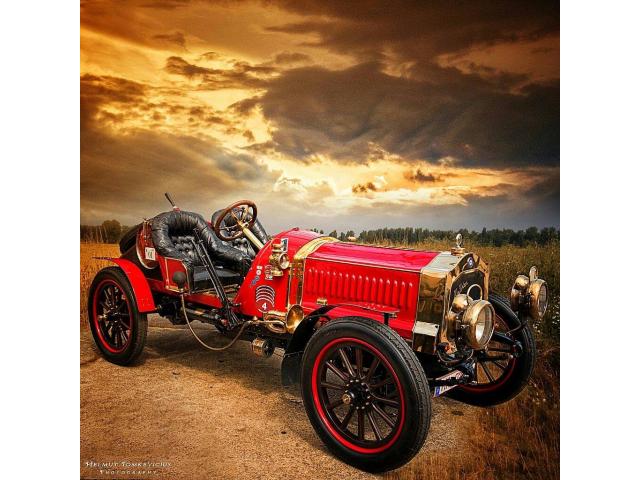1908 De-Dion-Bouton Grand Prix Car
- Brand: De Dion-Bouton
1908 De-Dion-Bouton Grand Prix Car
De Dion-Bouton was a French automobile manufacturer and railcar manufacturer operating from 1883 to 1953. The company was founded by the Marquis Jules-Albert de Dion, Georges Bouton, and Bouton's brother-in-law Charles Trépardoux.
The company was formed after de Dion in 1881 saw a toy locomotive in a store window and asked the toymakers to build another. Engineers Bouton and Trépardoux had been eking out a living with scientific toys at a shop in the Passage de Léon, near "rue de la Chapelle" in Paris. Trépardoux had long dreamed of building a steam car, but neither could afford it. De Dion, already inspired by steam (in the form of rail locomotives) and with ample money, agreed, and De Dion, Bouton et Trépardoux was formed in Paris in 1883. This became the De Dion-Bouton automobile company, the world's largest automobile manufacturer for a time, becoming well known for their quality, reliability, and durability.
Between 1900 and 1910 the company sold about 200,000 De Dion-Bouton engines to over twenty-four different car manufacturers in France alone. At one time or another the firm supplied engines to Clement, Darracq, Delage, Peugeot, and Renault in France; to Argyll and Humber in England; to Adler and Opel in Germany: and to Packard, Peerless, and Pierce-Arrow in the United States. Its engines were also produced under license in Belgium, Germany, Great Britain, and the United States. During this time no firm was more important in the emerging automobile industry and De Dion was its cheerleader. While Bouton handled all engineering matters de Dion was an indefatigable promoter and in 1898 co-founded the Mondial de l'Automobile (Paris Motor Show). The show that year attracted 140,000 attendees who saw cars, parts and accessories from over 300 exhibitors. De Dion is also credited with having conceived of the world's first road maps and first printed literature for automobile sales. In 1900 de Dion led a group of wealthy anti-Dreyfusards (Pro Catholic/Army) including Édouard Michelin to start a rival daily sports paper, L'Auto-Velo.
In 1901, the De Dion-Bouton Motorette Company began manufacturing De Dion-Bouton automobiles under license in Brooklyn, New York. A small quantity of American De Dion Motorettes were made. These had either 2 seater vis-à-vis or closed coach work and were powered by 3.5 hp American made engines. The cars proved unreliable and rather than ruin the company's reputation the parent company had second thoughts and the license was revoked after one year.
By 1903 De-Dion-Bouton added petrol powered trucks and buses to their model line and gradually eliminated the steamers. The company's line of petrol buses did especially well and supplied versions for both London and the Fifth Avenue Coach Company in New York. By 1913 Paris had completely motorized their surface lines and approximately one-third of their 1,000 vehicle fleet were De-Dion-Boutons. In that same year both Bouton and De Dion stepped back from directly running the company and management was turned over to Charles Lecoeur.
This De Dion Bouton Grand Prix racing car from 1908 is a classic race car, which is built in this body variant as HP 8 until 1914.
It have 4,500 cc 4-cylinder in-line Engine 40 hp and 4-speed manual transmission and it can go up to 150 km / h and it weight 1200 kg .
Descriptions & pictures by autowallpaper & wikipedia & grandprixhistoryb& Fliker
| Specification | |
| Production Start | 1908 |
| Country of origin | France |

































